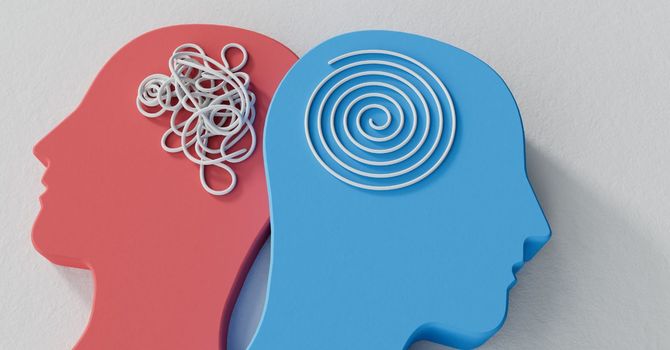In recent posts, I’ve been writing about stress and anxiety, and have covered ideas on how to reduce exposure to stress and increase capacity to cope. In the final article of this series, I will discuss strategies to adjust anxious thinking.
Step One - Noticing: describe the experience from an “objective distance”
Stress and anxiety typically “show up” in our bodies (physical sensations); minds (worry and other forms of negative thinking); and emotions (dread, apprehension, doubt, etc.). Describing the experience (I am having the thought that…; I am having the feeling of…; I feel X, Y, Z in my body) is a way of acknowledging what is happening without getting wrapped up in it. It can also be helpful to describe the context in which the experience is occurring: “I am reacting to…;” “This situation involves A, B, and C, which are stressful to me.”
Step Two – Regulating: turn the volume down on the stress response
When we experience stress and anxiety, our bodies and brains respond in the same ways they have since we were “cavepeople,” known as “fight, flight, freeze, or fold.” When we are in this state, the brain generates simple, reactive solutions. Unfortunately, most of the problems we face in the modern world require more thoughtful solutions, and in order to access them, we need to calm our bodies and minds.
Breathe: take some slow, deep breaths (in through the nose, out through the mouth). Ground: use your senses to describe the world around you (I see/smell/hear/feel/taste x, y, z,). Do these two things together for a minute or two. Once you feel physically calmer and back “in your body,” your brain has a chance to think and act differently.
Step Three – Shifting Thinking: it doesn’t have to be “positive”
Contrary to popular belief, thinking doesn’t need to be positive to have a positive effect. Sometimes, there is no “bright side” of a situation and there is growing knowledge of something called “toxic positivity.” However, even if there isn’t a “bright side,” there is often a more helpful, objective, or realistic way of looking at things.
- We might not always “hear” our anxious thoughts at first (sometimes the emotional or physical response is more powerful), anxiety is very “chatty” and most of the time, anxious thought(s) are present. We need to ask:
- What just went through my mind?
- What is it that I’m worried about/afraid of/etc.
Get the thoughts out: once we identify the thoughts, it’s very helpful to write them down or say them out loud. This helps to avoid rumination – getting stuck on a hamster-like worry wheel.
After hearing the thoughts and writing them out, the next step is to ask questions about the thoughts.
- Is what I’m worried about or afraid of probable or merely possible?
- How likely is it?
- What evidence am I using to draw this conclusion?
- Are there other ways to see this – or is there evidence that would lead to a different conclusion?
- If it’s unlikely (or only remotely possible), can I just “let it go” and shift focus to something else?
- If it is likely, is the consequence truly bad or is it just not good (and there is a difference)? Put another way, how bad would it be if this happened?
- Since I can’t avoid all negative consequences, if the thing happened, what would I do about it?
- What support / resources do I have that would help me deal with this if it occurred?
- How have I dealt with something like this before?
The answers to these questions can lead us to alternative thoughts and more helpful solutions. Unfortunately, many of us are more supportive with others than ourselves, and we don’t think to ask ourselves questions like those listed above. To access this more helpful person inside of us, it can be beneficial to ask, “What would I tell a friend (or other loved one) if they told me these fears/worries?” It can also be helpful to build self-compassion.
With practice (and maybe a little guidance), this way of thinking can become more natural – and there are many more strategies you can learn. You won’t eliminate stress and anxiety from your life, but you can learn to respond differently when it happens.
Jason is a Registered Psychologist with over 15 years of experience counselling adults and adolescents with a variety of concerns. Areas of specialization include anxiety, AD/HD, identity development, relationship issues, depression and self-esteem. In addition to counselling services, Jason conducts assessments with learners of all ages. He makes a unique contribution to the Centre through his skill in career assessments.




